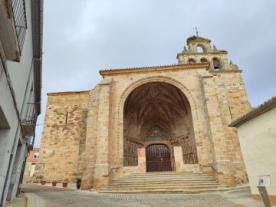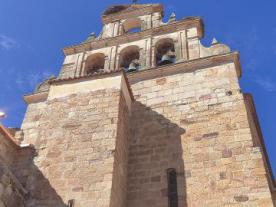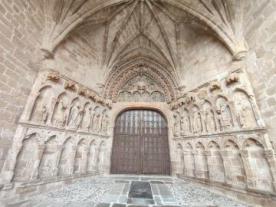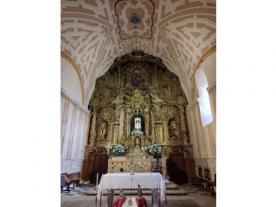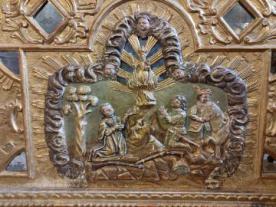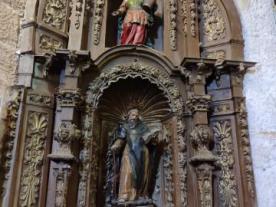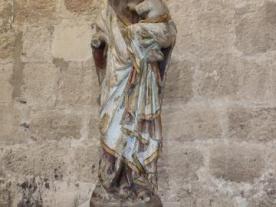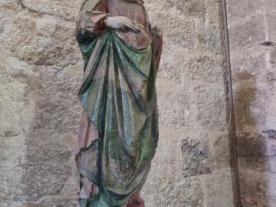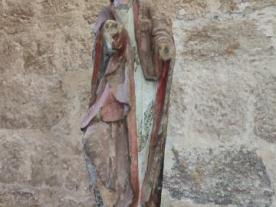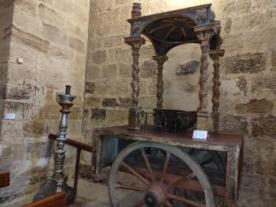Iglesia de Santa María la Real de la Hiniesta
- Vía de la Plata desde Sevilla / Zamora-Granja de Moreruela
IGLESIA DE SANTA MARÍA LA REAL, LA HINIESTA
This marvellous church, declared an Asset of Cultural Interest in 1944 as a Historic Monument, is one of the few examples of Gothic architecture in Zamora.
The building combines several construction phases and alterations, between the 13th century and the 18th century. The most outstanding elements are the doorway and the southern atrium: sheltered under a wide portico with a ribbed vault from the 15th century and a gallery of blind arches with sculptures. This portico was later polychromed with plant motifs and allusions to the Apocalypse. The lower tympanum depicts the farewell of the Magi to Herod and, in the upper one, Christ the Judge between Saint John and the Virgin. The imposing Espadaña Tower was added during the construction phase of 1720.
The interior is astonishing, dazzling on entering the main baroque altarpiece, the work of Churriguera, where the venerated though small image (29 cm) of the Virgen de la Hiniesta, from the end of the 12th century, can be found.
Also striking are several polychrome Gothic sculptures from the 13th and 14th centuries, presumably from the exterior portico: the Archangel Saint Gabriel, the Pregnant Virgin and the Virgin and Child.
Visiting hours:
Winter (1 September - 15 October): Friday to Sunday: 10:00 - 14:00 and 17:00 - 19:30
16 October to 31 May: Closed: Monday, Tuesday, Wednesday, Thursday, Friday, Saturday, Sunday and public holidays.
From 1 July to 31 August: Tuesday to Sunday: 10:00 - 14:00 and 17:00 - 20:00. Closed: Monday
This church is the protagonist of one of the most traditional pilgrimages in the province of Zamora: the Pilgrimage of La Hiniesta, which is held on Whit Monday and whose route starts from the Church of San Antolín in Zamora capital to this church.
Tradition has it that the pilgrimage originated with the transfer of the Virgen de la Hiniesta. According to legend, in the 13th century, King Sancho IV miraculously found the image and it was transferred to Zamora, to the Church of San Antolin, while the construction of its temple was taking place, thus linking the images of both temples. Once the work on the church was completed, it returned to La Hiniesta on Easter Monday in 1291, being accompanied on its return by Our Lady of San Antolin, patron saint of the city, who has continued to go on pilgrimages to the town every year since that year.

 Printing...
Printing...